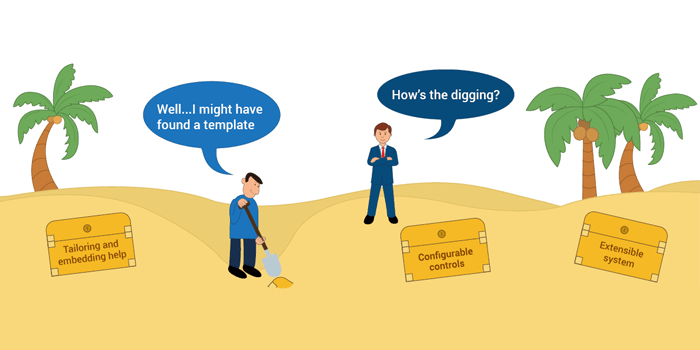16 March 2018
Finding the hidden treasure in your project processes
Nothing is worth less than “hidden treasure” but if you can find the treasures buried just below the surface of your everyday project routines, you can quickly add real value to your process. Most...
Nothing is worth less than “hidden treasure” but if you can find the treasures buried just below the surface of your everyday project routines, you can quickly add real value to your process.
Most project frameworks are familiar and yours is probably no different.
Standardised reporting? Check.
Mapped out escalation paths? Check.
Consistent method for starting, running and stopping projects? Oh Yes.
Maybe a set of templates or a SharePoint. You get the idea.
All good stuff, but hardly the pot of gold at the end of the rainbow.
But how about if your framework did all that and added lots more tempting goodies? Like maybe the ultimate prize for any project environment — effective project governance that delivers the right blend of focus, engagement, support, and direction? That would be worth a bit of digging, right?
How about a framework that can flex around all the different types of projects that you manage — right-sizing the controls to the level of risk or complexity? Sounds interesting…
What about a common language for discussing all your change initiatives? One that doesn’t make you rename your everyday business activities just because you’re doing them in a project? Pass me the spade!
Want to know the best news of all? You already have everything that you need to deliver those hidden gems… because they are all embedded in PRINCE2 — we just don’t always learn the right place to look. In fact, for many organisations that choose PRINCE2, the best of its benefits often go undiscovered, and unless you look under the surface you may never discover how much more PRINCE2 can offer.
In this blog we look at some of its lesser known attributes that can create truly holistic and integrated project delivery functions. If you are looking to develop a project management capability, or want to enhance the one you already have, it’s time go in search of PRINCE2’s buried treasure!
Here are three areas that others have already started exploring:
Start at the top… get high-level backing for governance processes
This can be a tricky area, but it cannot be ignored. Bear in mind that the current PRINCE2 certification targets those who manage projects, not those that govern projects (this is a fine, but very important distinction). Also, those who govern projects are usually the ‘bosses’, and unless they personally want a project to succeed, getting them to engage with a project governance process can be very challenging.
Unlike the Bodies of Knowledge, the PRINCE2 standard provides a top-down model for project governance, and many companies have successfully used PRINCE2 to develop a clear governance strategy that works within their organisation’s corporate governance system, backed up by authority at the highest level. This is critically important — poor governance is one of the major causes of project failure.
Build on the existing process strengths
One of PRINCE2’s lesser known attributes, now being extensively explored, is its ability to integrate with the organisation’s unique processes and language. Most organisations have set up at least some of the processes needed for project management, so don’t re-invent if you can integrate.
Controlling costs and scrutinising investment are two that most organisations can’t do without. These activities are also present within PRINCE2, but the roles and activities described in PRINCE2 may not reflect your own.
An effective PRINCE2-based capability makes use of the processes (and naming conventions) that already exist within an organisation, so don’t feel you have to try and make your organisation mirror the book — adapt your project framework to your environment.
Make project controls appropriate to project types
There can be many issues between the ‘project’ and the ‘teams’ doing the work. For example, a project manager wants to know what is going on, but a respected subject matter expert does not want to be continually questioned about progress. And, where those working on projects do not have a line management relationship with the project manager, there can be complex structural tensions to deal with.
PRINCE2 principles like ‘management by exception’, and controls like ‘work-package tolerance’ can resolve all of these issues when used intelligently.
Of course, that is not the end of the story. Any effective capability must continually be evaluated and enhanced, as time and tide will continually change the game. Effective measurement and benchmarking may therefore be the next objectives as your capability continues to mature. But maybe that’s the next treasure hunt.
If you are a project manager looking to improve the effectiveness of your PMO, then ILX can help you to get the most out of PRINCE2’s buried treasure, as well as many other methodologies and approaches. We can work with you to develop a bespoke structured methodology, combining accredited best-practice methods, to suit your organisation’s individual needs.
Find out more about our consultancy offering.
